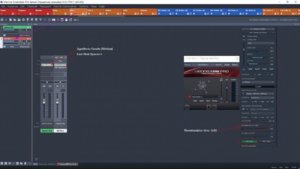I totally agree - as long as you only play some instruments. As sson as you play with a large orchestra it can end in a special sound.
Listen to this typical example.
I believe it is why the room IR is calculated a lot of times in each instrument so that the typical room-colour of the IR beginns to dominate the final sound more and more.
After using MIR for all your mixes over a longer time you will probably understand my "ketchup-story" above in a better way. Playing all the music through MIR lets all your music sound "MIR-like" - individual mixes would sound more interesting. Now, this does not mean not to use MIR anymore. I use for example MIRx in my mixes when I need instruments which shall sound far away. This works very fine with MIRx.
If you like here you can listen to some different VSL-examples mixed without MIR (on the right)
Best
Beat
Both are absolutely wonderful. The classical pieces by bSO are amazing. However, I must admit I prefer the sound of your mix. The Holberg Suite is simply brilliant. Did you use the mix as described in your tutorial? Using some compression, slight stero enhancement and then a final algorythmic reverb?
Last edited:



 This would be true if you were using the same single IR over and over again.
This would be true if you were using the same single IR over and over again.  Its library is a huge source for IRs from very diverse acoustic environments. In the right hands, it is a powerful reverb engine. - I have a hard time to compare AltiVerb with MIR as we're talking about different products with very different approaches and goals. The only thing in common is that they both rely on convolution processes, actually.
Its library is a huge source for IRs from very diverse acoustic environments. In the right hands, it is a powerful reverb engine. - I have a hard time to compare AltiVerb with MIR as we're talking about different products with very different approaches and goals. The only thing in common is that they both rely on convolution processes, actually. , e.g. my entire VEPro project consists of instances per each instrument and Mir Pro as plug-in, where should I place EW Spaces or some algorithmic reverb, per each instrument or Master Bus or where? and just wondering how to use the MIR Pro in Dry Solo-mode, never heard of it before?
, e.g. my entire VEPro project consists of instances per each instrument and Mir Pro as plug-in, where should I place EW Spaces or some algorithmic reverb, per each instrument or Master Bus or where? and just wondering how to use the MIR Pro in Dry Solo-mode, never heard of it before?



